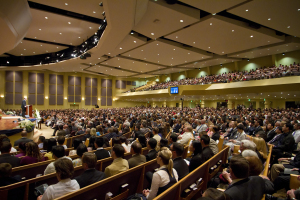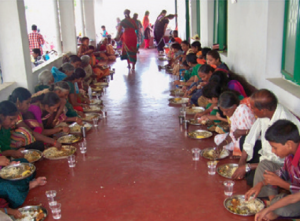By Franklin Dumond
Any outreach strategy that focuses only on expanding the attendance at one worship service may have the unintended consequence of settling back into the routine of business as usual after that day passes. Successful outreach strategies include special efforts to conserve the results of this special day.
Three types of effort are necessary to conserve the results of any outreach strategy, and especially those of a Big Day.
First, efforts must be designed to identify, connect with, and encourage the return of first time guests who are present on any Big Day.
Second, leaders must have a disciple-making strategy in place that will not only introduce first time guests to faith in Christ, but will also facilitate their spiritual growth.
Third, leaders must have a working strategy in place to involve as many new people as possible in service roles in the ministries of the local church.
Because of the conservative nature of most of our General Baptist churches, the third effort just described is often the most difficult. Nevertheless, assimilation strategies that work can be identified and customized to each local church.
This is also true of disciple-making. There are many small group and one-on-one disciple-making strategies that can be easily adapted to most local settings, if we will simply make the adaptation.
Working with the structures of a local church, however, to quickly empower new servants can be very, very difficult. Here are a few suggestions that can assist church leaders from any size congregation to develop a mindset and a practical strategy to include more people in the working life of the church by serving in a ministry setting.
1. Identify how many volunteer positions are required to operate the ministries of your church. Think through every ministry task that is needed. In the established church, many of these roles will be identified in the organizing documents that guide the life of the congregation. In the growing congregation, there will be just as many informal adaptations to new ministries and new opportunities. Be sure to identify all the ministry tasks that occupy volunteer time and effort.
2. Identify who is currently serving in these positions. Write down their names beside the ministry role they occupy.
3. Review your list. Are a few people engaged in several ministries? If so, you could expand your list of volunteers if folks are limited to how many positions they can hold. Perhaps they can mentor and train those who will come alongside to share the load.
4. Expand your opportunities. Can the opportunity to serve be shared? Can several people take turns doing ministry? For example, if four ushers generally collect the tithes and offerings along with the communication cards, ask these questions:
- Should the same four people serve in this capacity every Sunday? Could a team of 16 serve by each serving one Sunday a month?
- If four ushers can collect the offerings and communication cards, why not use eight and expand the number of workers by purchasing a few new offering plates and by dividing the auditorium into smaller sections?
By applying this same logic to greeters, parking lot attendants, welcome center attendants, and those who set up the coffee makers, it is possible to double or even triple the number of people actively engaging in ministry!
5. Identify how many volunteers would be required to operate as a church twice your size. This will at least double your volunteer base and will probably expand it even further. Keep in mind that as you gain new people, they are not coming to just watch the show. They are coming so they can find meaningful opportunities for relationship and responsibility.
 Greetings in the precious name of Jesus. India is a country with different cultures, languages and religions. Hindus have many festivals throughout the year. For all those festivals they buy new clothes, clean their houses, and perform different worships to different Gods.
Greetings in the precious name of Jesus. India is a country with different cultures, languages and religions. Hindus have many festivals throughout the year. For all those festivals they buy new clothes, clean their houses, and perform different worships to different Gods.
